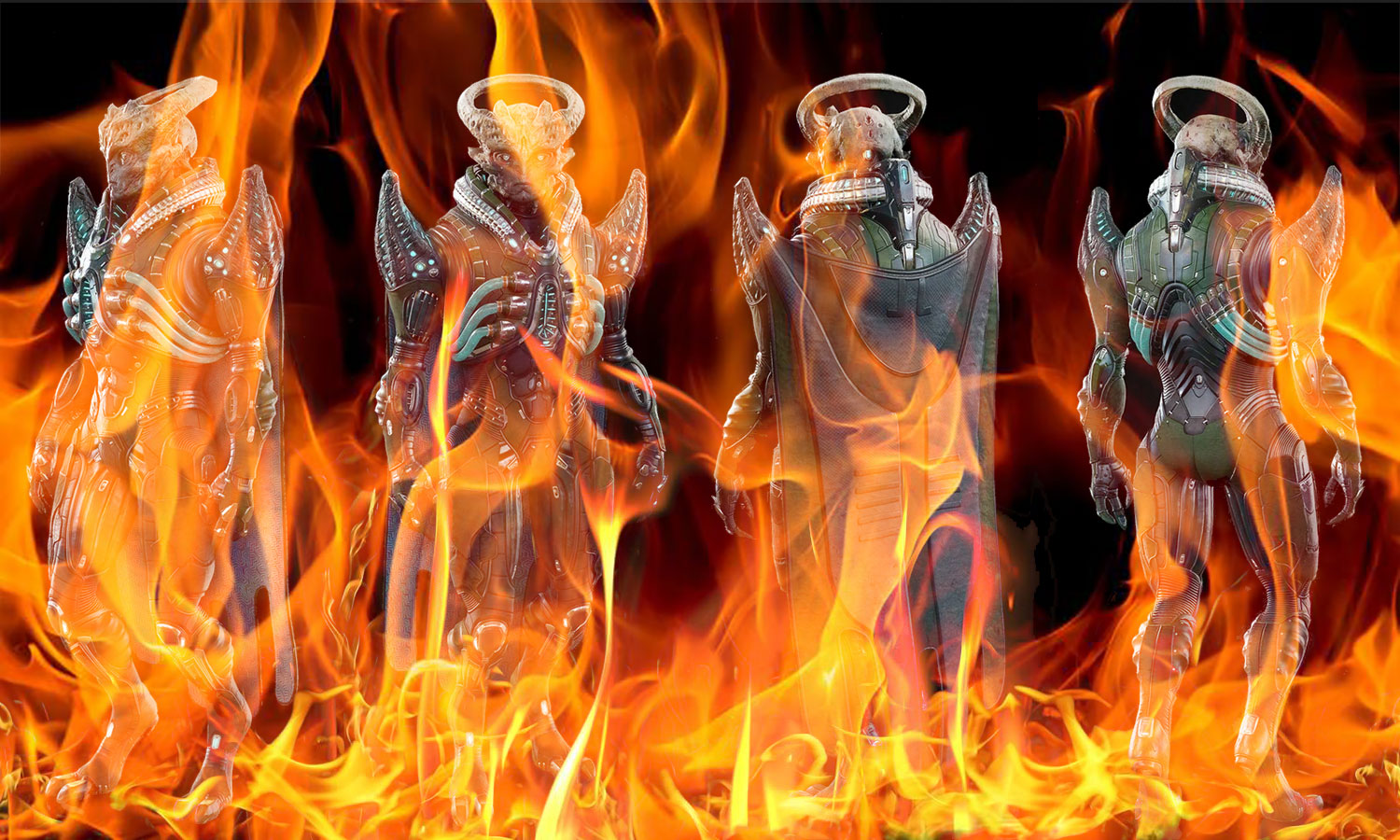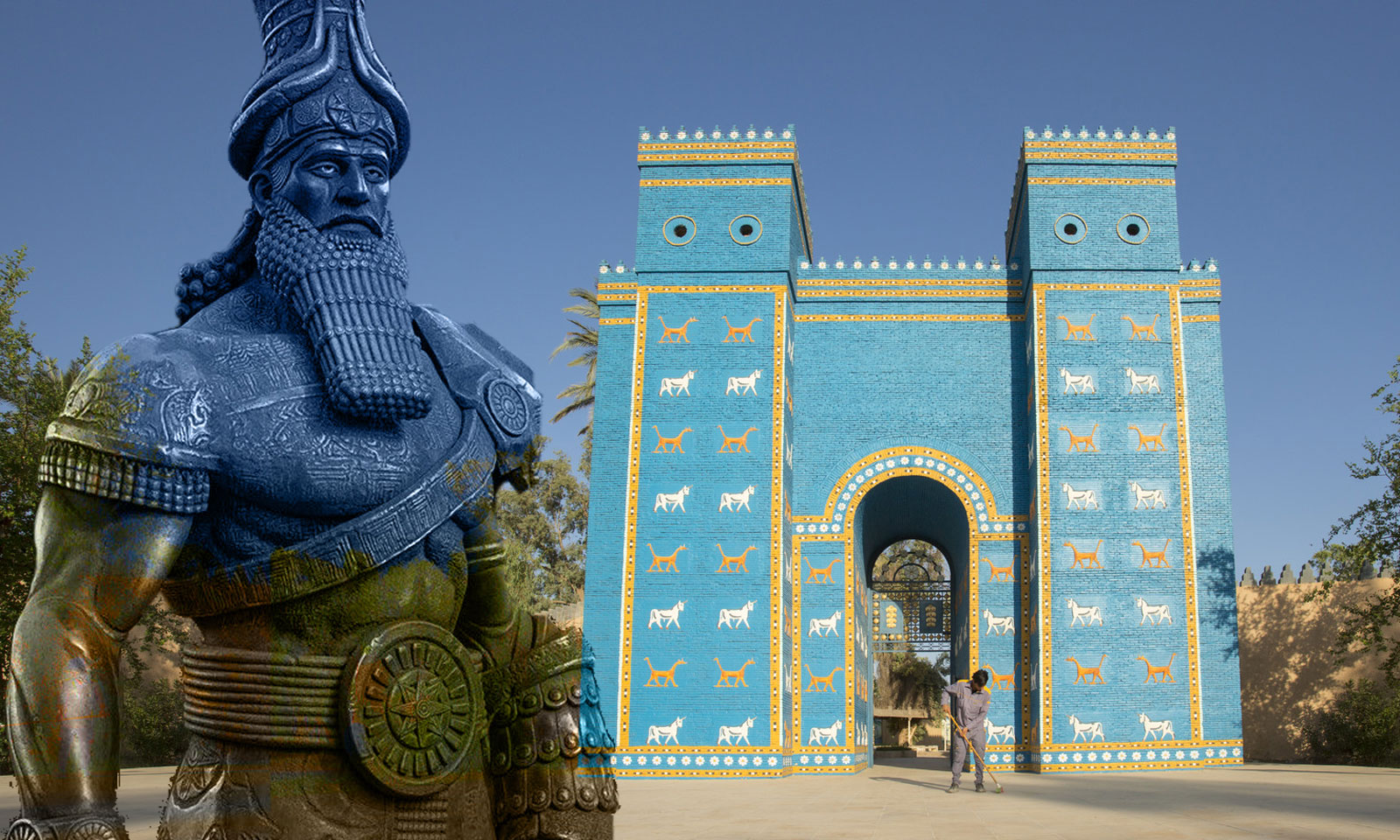
Last night I saw Marduk in Babylon. A dragon. He knows me, he says we’ve met before. He listed my powers, he knows I know the timeline. I don’t remember anything, so I looked for information. Marduk the Great is best known for killing the goddess Tiamat. God of Babylon, he became Baal Marduk ie Zeus, patron of the gods, absolute master of humans. He is still, and for a long time.
Belenos for the Celts, Baal in the Bible, he is Damarutu in Sumerian, which means “Calf of the Sun”. In addition to his loyal enemy the Hydra Tiamat, this powerful god has a secret weapon, the chestnut, as well as a weighty ally, Mushussu, flying dragon spitting fire. As he does?
Reality or Dream in Bed?
Who am I to him? His worst enemy, no doubt, but in his eyes an insignificant being. A fleeting. If he deigned to open his incendiary mouth, I would not last long. Despite that, he is afraid of my judgment. When he feels the fart coming, he crashes and changes the subject. Too bad for him. My resolution is made and has been for a long time. I’ll be ruthless, implacable, imperial. And little King Marduk is going to take a beating. It’ll make his feet.
Finally the meeting went rather well. I did not learn much, so as usual I will spare my effects, revealing my discoveries only behind the story that the Sumerians left us, in a series of cuneiform tablets tracing the List of the Kings of Sumer. What the List does not say, I will add from what I have seen.
Now see what I’ve found. Time for Marduk Belenos Baal Damarutu Zeus. And Balor. And Indra?
Indra
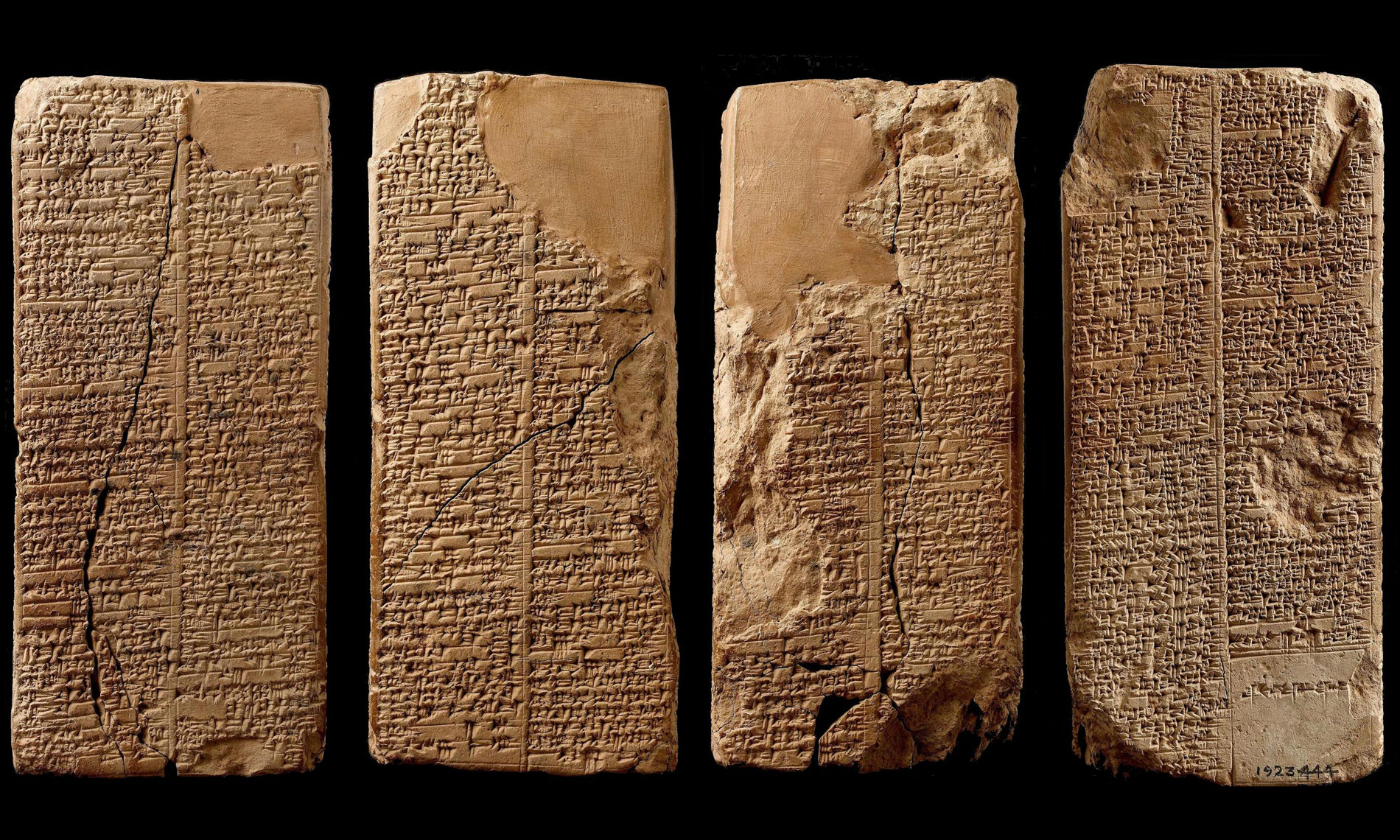
List of Kings of Sumer
This impressive list begins a little over 240,000 years ago. That’s all. A bit of proto-history: the planet Nibiru arrived in our solar system 500,000 years ago. The first 260,000 years of terrestrial colonization by the Anunnaki reptilian gods took place under the reign of the god Alalu.
One can recognize the syllables of Allah. And the sound approaches Allahu, like Allahu Akbar.
These reptilian gods had a truly mind-boggling longevity. Alalou was murdered by his son Anu, whose arrival marks the beginning of the list of Kings. Although he was the youngest son of Anu, Enlil became the most powerful god in the Sumerian pantheon. Marduk will take the place of Enlil some 200,000 years later.
So only 40,000 years ago. If he has to live as long as his ancestors, we still have him on the back for 100,000 at least. Sad song.
All these accounts are impressive and on our scale they don’t mean much. I give them so that the reader has an idea of the life span of our reptilian masters. Next to them, our reptiles are ephemeral: 120 years for the crocodile, 190 years for the turtle…
Genealogy of Marduk
Don’t look for Marduk in the list of Sumer kings. As god, he is above them all, and his reign will be much longer than theirs, already considerable. The genealogy of the Hebrew kings of the Bible seems to be based on that list. It is less impressive. As a rule, all the traditions of this part of the world are eclipsed by the magnificence of Sumer, the brilliance of his kings and their staggering longevity.
The Mesopotamians made him the eldest son of Ea and the goddess Damkina. Originally a secondary agrarian god, Marduk eventually supplanted Enlil (and absorbed his powers) as the supreme god of the pantheon. It gained its full importance during the reign of Nebuchadnezzar I, ruler of Babylon from about 1125 to 1104 BC. The Poem of Creation (Enuma elish), written at that time, is intended to justify this promotion. He is associated with the dragon (Mušhuššu), the planet Jupiter and the number 50 (also attributed to Enlil) (Wikipedia)
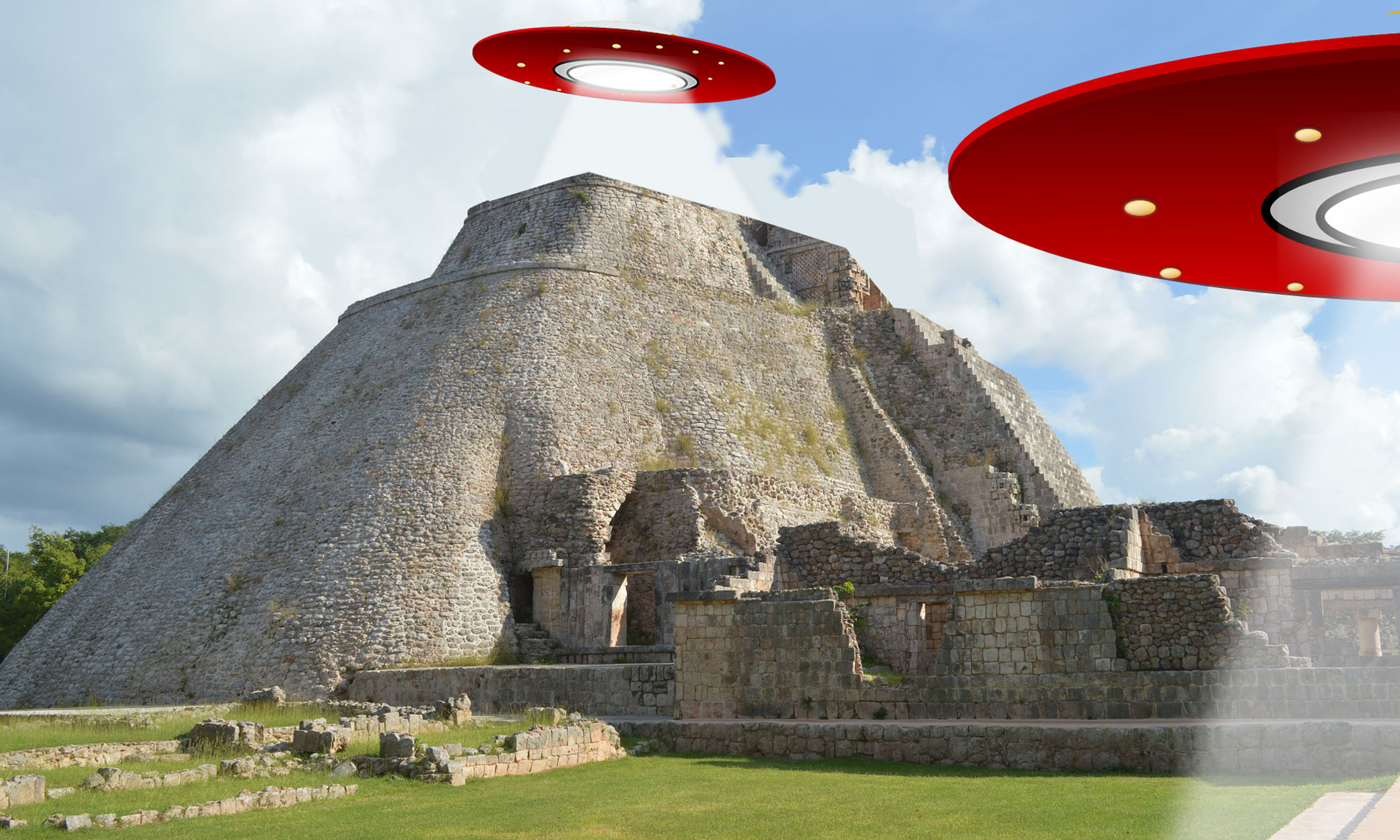
Thrones of Solomon
In the days before the numbered times, Marduk sat in Babylon in his sanctuary the Esagil, temple with raised pinnacle, adjoining the ziggurat which is called Tower of Babel. At least that’s what the Sumerian tablets say. To check these sources, it’s best to go and see. What I did.
Marduk had his own spaceport at Babel, in his sanctuary the Esagil “the temple with the raised pinnacle”. This raised pinnacle must designate the ziggurat adjoining the temple, like the bell tower of a church. The term ziggurat comes from the Babylonian word “zaquru” and means “to be elevated and above”. It refers to the top of a mountain or a storey tower, which serves as an artificial platform on the Mesopotamian plain. (source)R.A. Boulay, Le passé reptilien de l’humanité, éditions Aquarius.
Zaquru
Zaquru refers to nothing other than what posterity will call a throne of Solomon, a take-off platform for its flying machines. Marduk had a whole fleet of spaceships, airplanes and flying submarines that the Hindus called vimanas. But his main spaceport was in the very ancient city that bore his name, Baalbek.
The Mesopotamian plain is probably the main settlement of the Anunnas on our planet. They have built many cities in this area, and one can still admire a cyclopean platform destined for Baal Marduk, in his city of Baalbek. It was used as a runway for the spaceport making the link with the Anunna spacecraft. This mother ship in hover, the Greeks named it Olympus and the Romans, Hyperborea.
The Anunnas called it Urusaganna, which decomposes into Uru Sag An Na, the main city of the heavens; or Uru Sag Anna, the first city of the great goddess Anna, who reigns on the planet Ur, under the sun of Alcor, in the great bear.
This platform was reused by the Romans as the foundation of the temple of Jupiter in Baalbek, during the Roman colonization. By this time the Anunnaki had been home long ago. But if they had seen this work since Ur of Alcor, they did not consider it ungodly. Baal Marduk, the first owner of the place, went from being a local god to being the main god of Terra, the god of the gods of Babylon. Subsequently, Marduk received the title of Zeus from the Greeks. What could be more natural that a temple was dedicated to him on this spaceport that had become useless?

The terrible Tiamat
Marduk’s ascent began under the reign of Sumu-la-El in the 19th century BCE (BCE). Then the powerful king Hammurabi allowed the spread of his cult, which became national. The real turning point for Marduk came in the 12th century BCE. The Epic of Creation or Enuma elish is written at this time, which gives pride of place to Marduk. His official elevation makes him the king of the gods, because he defeated Tiamat. This birth goddess has spawned gods, in which one could recognize Athena or Ninhursag. But unlike the two previous goddesses, Tiamat is a formidable sea monster, a hydra with hideous heads.
Marduk then replaced his uncle Enlil. He accomplished a feat that deserves this new status. Neither Anou his grandfather nor Enki his father had succeeded in defeating Tiamat.
Tiamat is a Mesopotamian goddess, personification of primordial waters. She appears above all in Enūma Eliš, the Epic of the Babylonian Creation, as the mistress of the forces of chaos, and the main antagonist of the great god Marduk. Hydra Tiamat is a terrible monster, which Anu and Ea Enki have given up killing. Marduk succeeded in this and gained all glory, to the point of supplanting Enlil and Anu in the first place of the Babylonian pantheon. (Wikipedia)
Sun Calf
Damarutu, his Sumerian name, means “Calf of the Sun”. Damarutu Marduk came from the Sun of Hyperborea, the hyper-luminous mother ship of the Anunnas. Their name breaks down into Anu + (A)nna, a way of saying that these space visitors were the sons of Anu, god of Terra and grandfather of Marduk, and first the children of the great goddess Anna, Ana or Dana, who reigned over an empire of ten thousand suns from her native planet Ur en Alcor. Anna and Anu are the parents and leaders of the people from Alcor in the Big Dipper.
In the same way, Tuatha Dé Danann decomposes into Tuatha, the people + Dana An, the ancient goddess Dana or Ana.
This explains the Sun of its Sumerian name. But why the calf? Marduk, like other Sumerian gods, is depicted with bovine horns on his crown. But he is also given a bull body. Now the calf is the calf of the bull. Is it to be believed that Ea Enki, her father, was the bull that begot the calf Marduk?
Or should I indulge in my favorite gymnastics, the famous Language of Goslings? Amarutu, root of Ama. Or Amar gives Rama in verlanbackwards. As for utu, you may pronounce you too. As “You too my son.” -Tu quoque filii, said Caesar to Brutus. But it is another story…
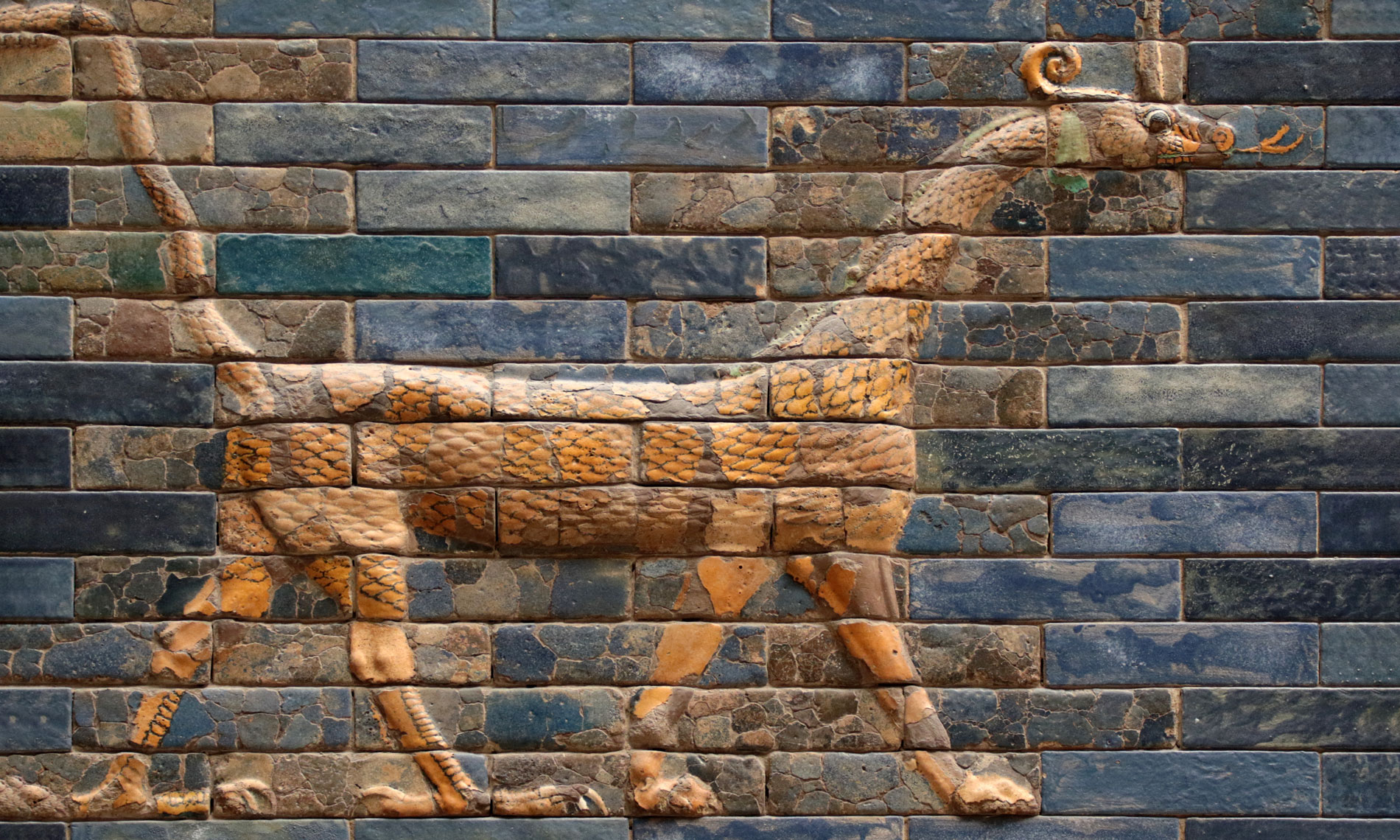
Dragons and Humans
Great god of Babylon, Marduk or Amarutu in Sumerian, was the eldest son of Ea-Enki and Damkina. His pet, Mushussu, was a dragon. Its name comes from the Sumerian MUŠ.HUŠ, literally red dragon, that is furious dragon, red representing the great anger. This creature was said to have a snake body surmounted by a horny head, its forelegs being those of a lion and posterior those of a raptor. (wikipédia)
There are many dragons in the ancient traditions of the world. Humans have been around them for a very long time. Sometimes beneficial, they helped our ancestors, educated them, and taught them a host of useful things, including very advanced notions of mathematics and geometry.
These dragons are also presented as predators, it is their natural vocation. Carnivores, they adore human flesh so they eat a lot, feeling stunned by digestion. These animals take long naps, they are even subject to reptilian dormancy which can make them sleep almost a third of their life, considerably long.
Mushussu
Mushussu the snake dragon has a special status. It was the pet or symbol of many Sumerian gods before it became Marduk’s. I don’t believe in symbols. I reject this mania of our archaeologists and other professionals of the past to interpret symbolically everything they do not understand.
Mushussu is neither a pet nor a symbol. He could be what nagualism calls an ally. King Marduk had great personal power and had acquired the precious collaboration of this formidable dragon. Unless? Unless Mushussu is Marduk himself. We know that Marduk is a god of Hyperborea, therefore a reptilian, and a dragon himself.
It is the animal-symbol personifying several deities. It appears that he was originally associated with Ninazu, a god revered in Eshnunna and his son Ningishzida of Gishbanda and then Tishpak, who became the chief god of Eshnuna in the early 2nd millennium BC. After the capture of this kingdom by Babylon, the concept of the dragon-snake is reassigned to Marduk, then guardian god of the city, which will then become the main deity of Mesopotamia. (wikipedia)
It is easy to imagine that the title of Mushussu is given to those of the governing gods who show great courage. Similarly, the Roman emperors who succeeded Julius Caesar carried the title of Caesar. In this hypothesis, Marduk would have become Mushussu, the divine governor with great courage, following his victory over the terrible Tiamat.
Whether Mushussu is his Castanedian ally or Marduk himself, it was thanks to the wrath of the Red Dragon that Marduk managed to defeat Tiamat, the sea hydra. But it’s also thanks to his secret weapon…
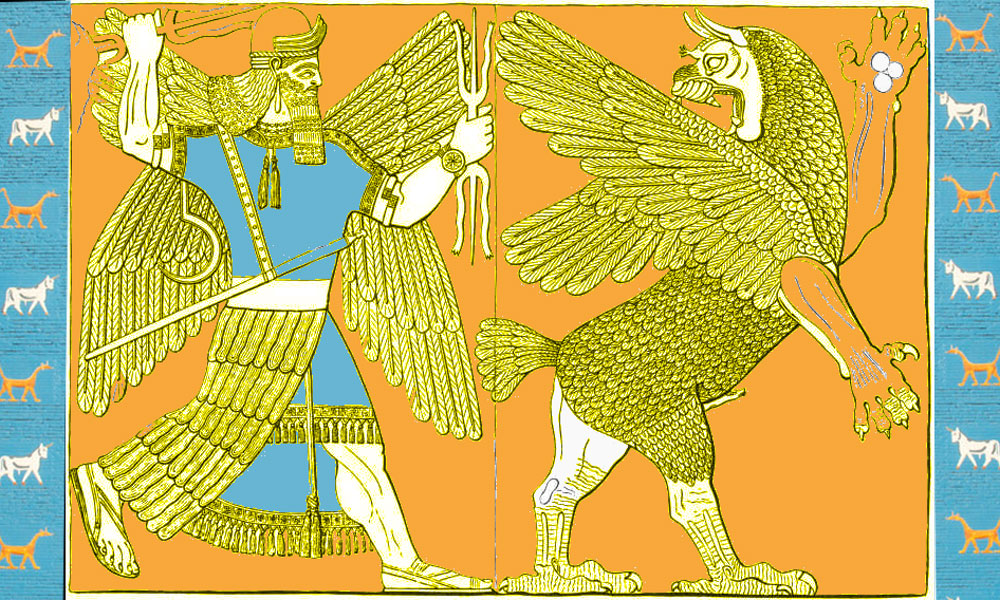
Secret Weapon
There is still a third possible hypothesis.On the previous image, we can see Marduk chasing, not the terrible Tiamat, but his faithful Mushussu. This Babylonian representation is explicit: Marduk is running away the furious dragon. Either Mushussu and Tiamat are one and the same monster that Marduk would have defeated, or the same Marduk would have defeated several monsters, Tiamat the hydra, and Mushussu the dragon. And, I’m afraid, the guardian god who still reigns on Terra, our planet in desolation.
In the same image, to make the Mushussu flee, we see that the God-King brandishes a strange weapon, which the Sumerians call brown. Marduk is originally an agrarian deity, as evidenced by his attribute, the brown, a kind of spade. (source) Agrarian deity, my eye! Chestnut is not an attribute. It has nothing symbolic, much less agrarian. Chestnut is a weapon. My attentive readers immediately recognized it, this weapon is what in India is called a vajra.
Two Vajras
The Hindus and Buddhists of India have devoted an abundant literature to this mysterious object. Sacred weapon, its murderous power considered harmful would have been removed by Buddha, who brought the tips closer. In doing so, if the legend is true, Buddha would have made a gross mistake, transforming a useful object into a symbolic trinket, devoid of any operativity. But it was not the same before our modern religions that do not remember anything and turn into indigestible porridge mythology that exceeds them.
Listen to the words of the Rigveda: “Now I describe the glorious deeds of Indra, who holds Vajra. He killed the serpent and made the waters flow. He broke the hearts of the mountains. He killed the snake that was taking refuge in the mountain. Tvashta made the Vajra for him. Like the cows making sounds, the flowing waters reached the sea. Mighty Indra chose Soma and drank three containers. The generous Indra held Vajra in her hand and killed the firstborn among the snakes.” (source) Rigveda 1.32
The vajra was a kind of laser gun. It projected lightning towards the opponent. As one throws a throwing weapon, the indestructible lightning burst like a ball of meteorological fire across the skies, in a whirlwind of thunder, fire and lightning.” (source) Nitin Kumar, in his article Ritual Implements in Tibetan Buddhism
![Vajra ouvert, vajra fermé, par SKI Stef Kervor Infographie pour Eden Saga - d'après En haut / on top : Vajra ouvert, à l'origine une arme de poing qui lance des éclaires - Thunbderbolt (vajra) -- Source/Photographer: Image: http://collections.lacma.org/sites/default/files/remote_images/piction/ma-31975192-O3.jpg -- Gallery: http://collections.lacma.org/node/172755 --- https://commons.wikimedia.org/wiki/File:Thunderbolt_(Vajra)_LACMA_M.91.232.5.jpg --- en bas / below : Vajra fermé, objet rituel uniquement - Metropolitan Museum of Art [CC0], via Wikimedia Commons - https://commons.wikimedia.org/wiki/File%3A%E4%B8%89%E9%88%B7%E6%9D%B5-Three-Pronged_Vajra_Ritual_Implement_(Sankosho)_MET_DT5689.jpg](https://eden-saga.com/wp-content/uploads/vajra-ouvert-ferme-wkp-ski-1900X1141px.jpg)
The bearer of vajra
But the vajra did not only destroy. It could also heal, or even awaken, those targeted. Here comes the curious legend of the bodhisattva Vajrapani, whose name means bearer of vajra.
Vajrapani belongs to one of the main Buddhist traditions, that of Vajrayana. The first Buddhas belonged to this tradition, say the Buddhists. Is the Vajra Way the art of slaughtering giants and other monsters hostile to humans? It is quite possible, even if modern Buddhists do not believe it.
Candied in devotion for Buddha their idol, They speak of the vajra with closed points, the vajra ritual object, and not the handgun that originally had its darted points. The image below shows you both models. I specify that the opened vajra is not a real weapon, but a late copy, which never claimed to work.
That is the problem with these ancient weapons. We only find representations or fake copies. The crowns of Osiris and the other pharaohs of Egypt were never found, nor were the divine weapons, flying machines, and other precious and dangerous equipment that the terraformers did not entrust to the guard of humans. They took them with them on their mother ship.
So it is with Mjöllnir the so-called hammer of Thor, Scandinavian god. For me it is not a hammer but a high-tech object, a deadly weapon that can kill at a distance. The parallel with the vajra was the subject of another article.
Marduk Titles
Alone of all the gods, and after the defection of Anu and Ea during creation, Marduk dared to compete with the monstrous Tiamat. After his victory, the gods recognized Tiamat’s killer with fifty titles, including:
Marduk,
The light of the father who fathered him,
The renovator of the gods,
The lord of the pure incantation that makes the dead live,
Marduk,
He who knows the heart of the gods,
The guardian of justice and law,
The creator of all things,
Marduk,
The first of all the lords,
The lord of kings,
The pastor of the gods.

The Golden Legend
Prestigious titles missing the main ones: Marduk winner of Tiamat, Marduk bearer of the vajra-marrou, Marduk Mushussu, anger of the red dragon. Because he also carries the Vajra, or Vajrapani, Marduk belongs to one of the main Buddhist traditions, that of Vajrayana. The first Buddhas belonged to this tradition, say the Buddhists. Is Vajra Way the art of slaughtering giants and other monsters hostile to humans? It is quite possible, even if modern Buddhists do not believe it.
Could Marduk be a Buddha? Could he be Indra himself?
Anything is possible. Every people, every local tradition is the daughter of the great planetary legend, this golden legend of our origins. The different human lineages appropriate fragments of this global legend, which they adapt to their customs, their history, their beliefs. This is how the great Rama is told in a hundred different ways by each of the peoples he has submitted. And as he was the master of the whole earth and the first emperor of humans, many legends speak to us of him, at a different period of his very long life, and under assumed names.
The relocation of the facts and heroes of the Golden Legend is a constant in proto-history. Do I have to be stupid or very unconscious to attack a dragon of his kind! The sons of Aaron left their skin there for much less than that. They just burned incense! To punish them (from what?) the dragon Hachem roasted them to devour them out of sight.
Wolf Army
You have understood my unconsciousness or my madness. It is Marduk that I chose as my opponent. Against him I hire an army — let’s be modest, a squadron of Flying Wolves. They come from everywhere, they know me or they still ignore me, it doesn’t matter. The bottom line is commitment. Once and for all, it is important to put an end to the reign of fire, the tyranny of our eternal masters, the archon dragons.
They looked at our cradle, they initiated us, they helped us grow, here they are claiming their salary. It is to our soul that they resent it, for these unfortunate ones do not have any. They aspire to eternal life, for the death of their bodies is the terrifying end that awaits them. Their life is certainly long, disproportionately. For them, it passes like an instant.
To resist the exhausting pressure of gravity, they took refuge in the astral, not in this luminous and golden astral that welcomes the human initiates, but in the icy waters of selfish calculation, where they became embittered. Jealousy devours them and makes them vulnerable. They want that super-consciousness that they so sorely miss. It is reserved for beings born of the Pleroma, they are not part of it.
In a coming article, I will talk about the astral struggle that opposes us. Dantesque and cyclopean. Both divine, superhuman and bestial.
